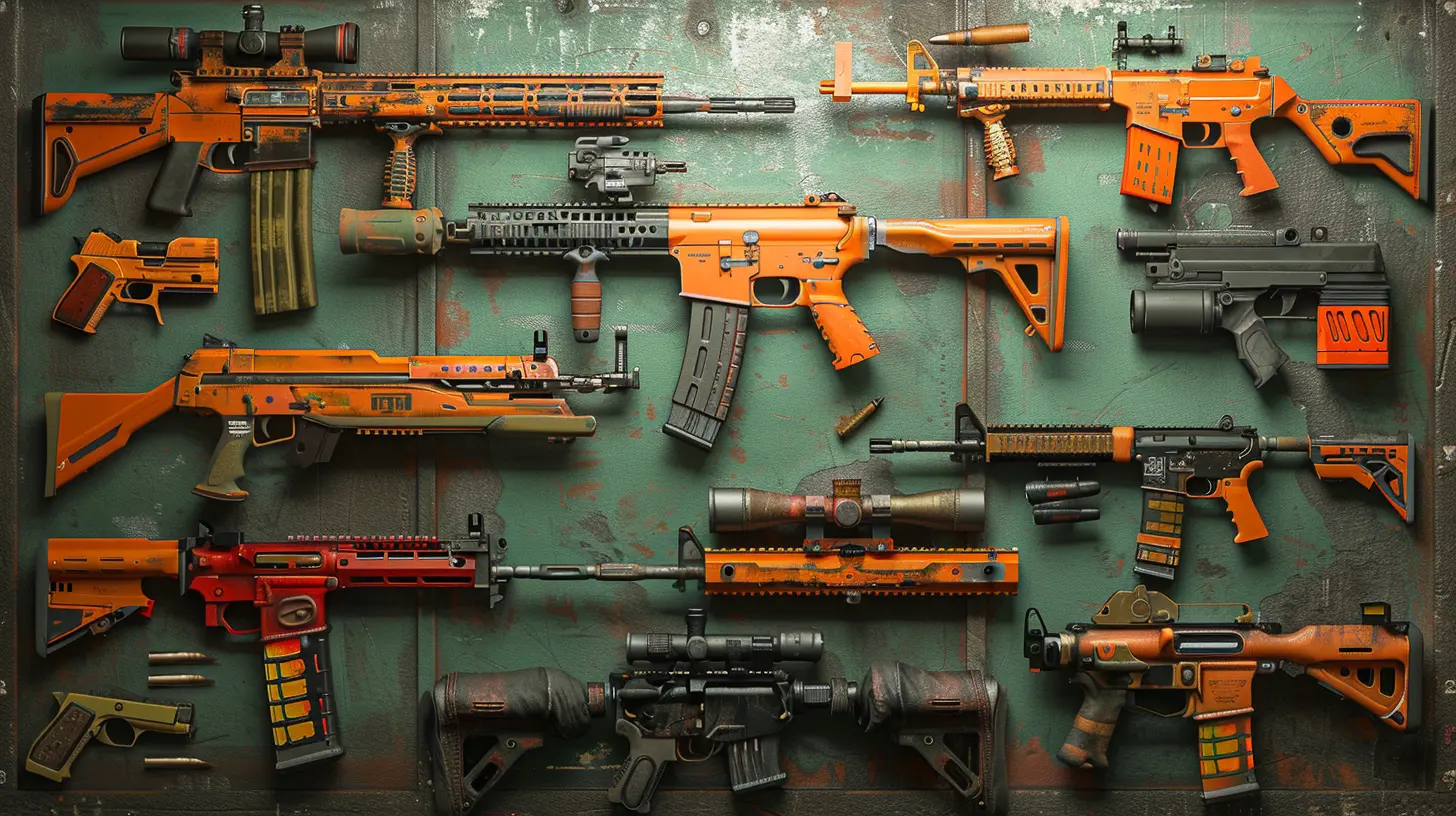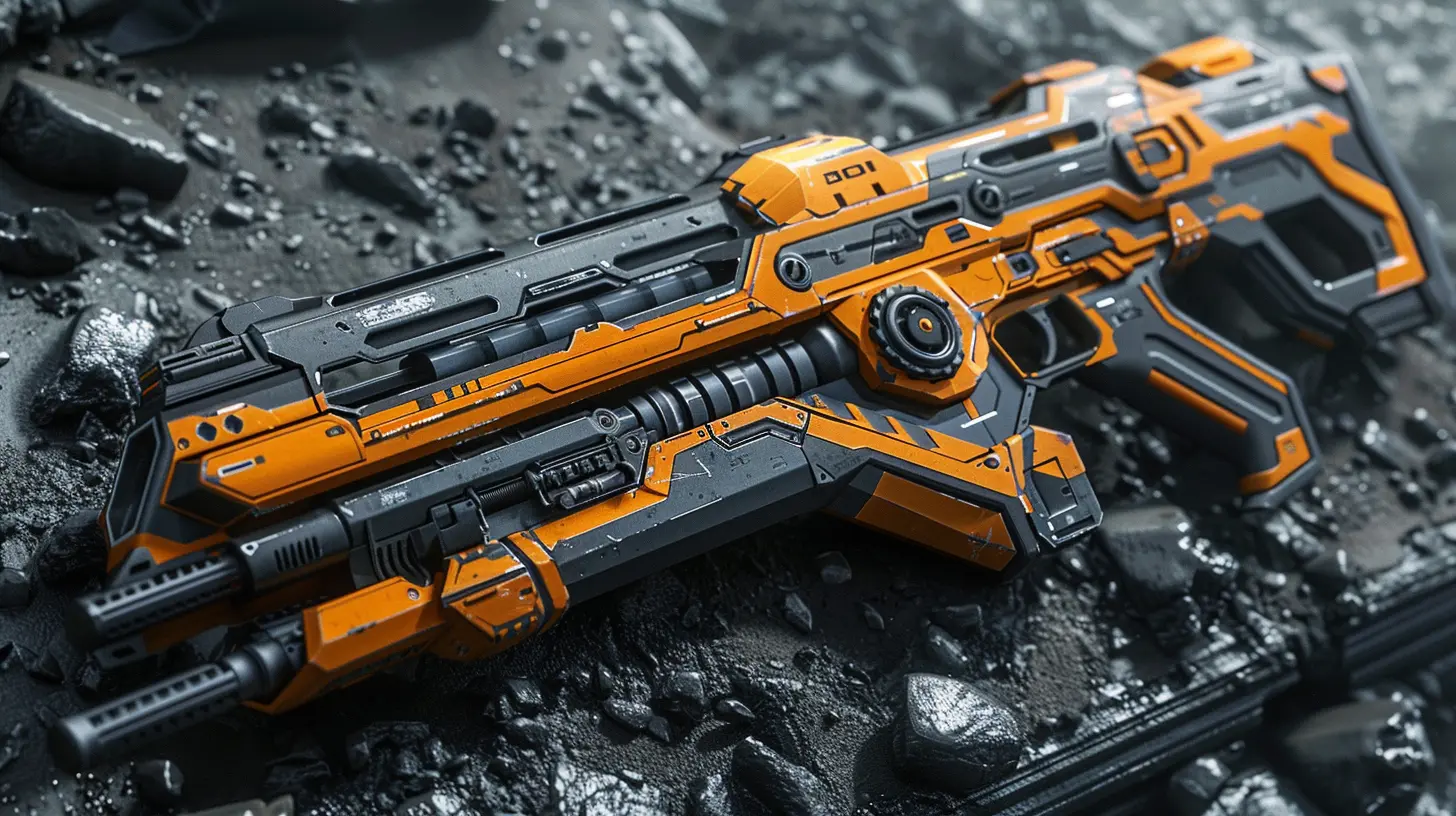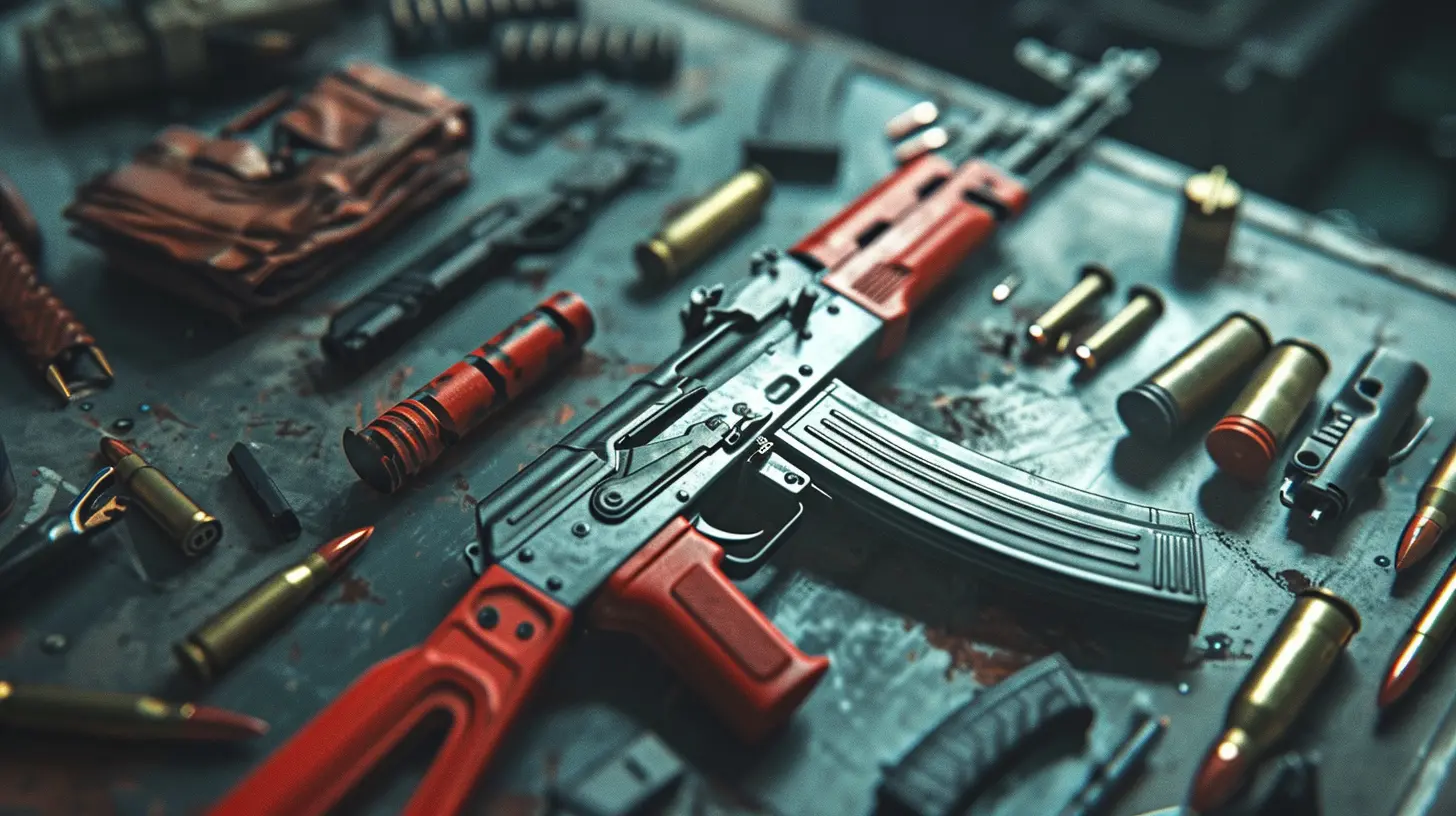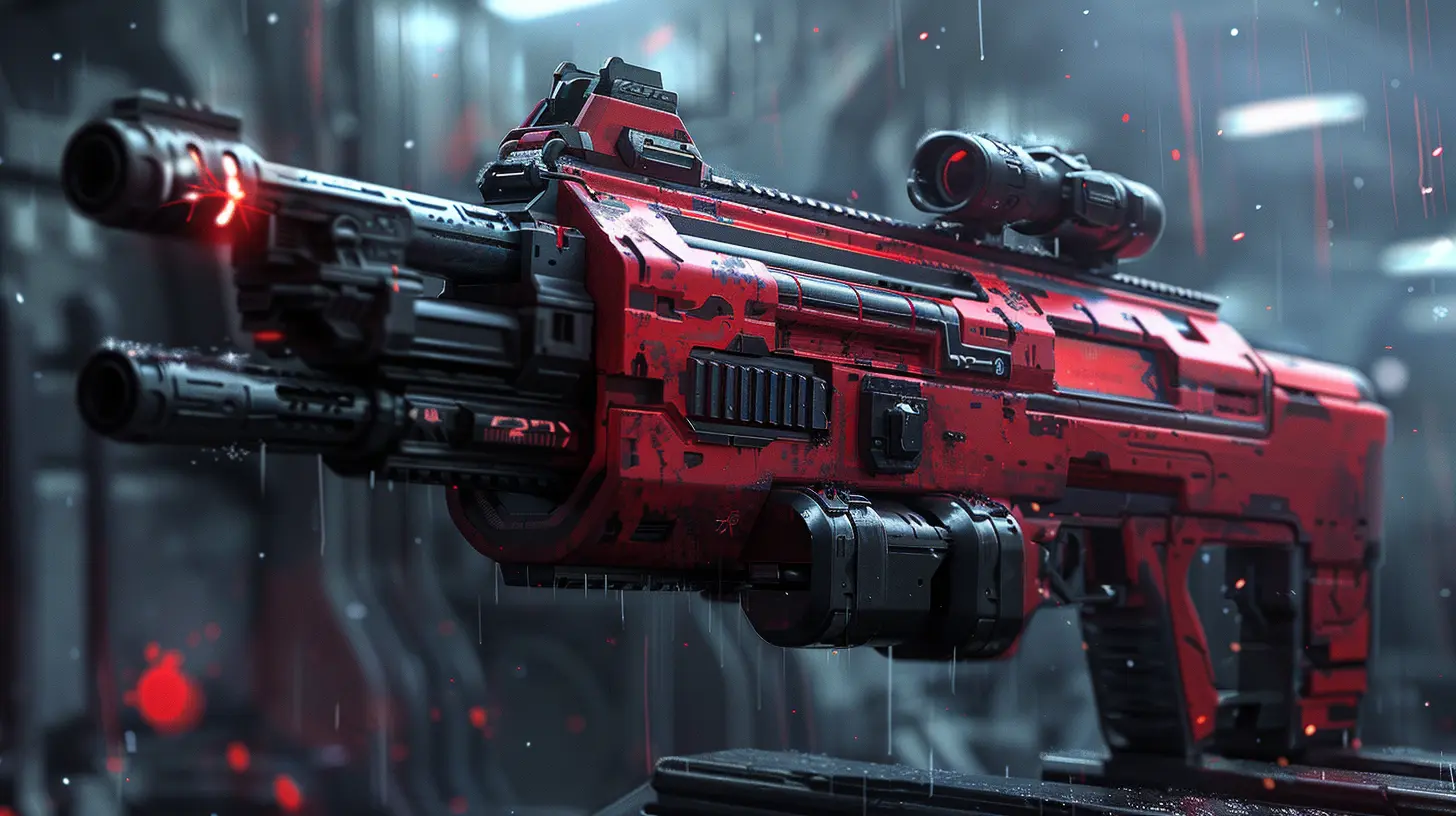How to Maximize Firepower Through Custom Weapon Loadouts
23 July 2025
Let’s face it—when it comes to gaming, nobody wants to be “that guy” stuck with a garbage weapon while everyone else is absolutely shredding. Whether you're diving into a competitive FPS, a tactical shooter, or even an action-packed battle royale, your weapon loadout can make or break your game.
But here's the deal—most of the time, the default setups are about as exciting as a plain slice of toast. Sure, they get the job done, but they’re rarely optimized for you. That’s where custom weapon loadouts come into play. By personalizing your arsenal, you’re not only packing more firepower but also tailoring your weapons to suit your playstyle.
So, how do you maximize firepower through custom weapon loadouts? Grab your virtual guns, and let’s dive into the ultimate guide!
Why Custom Weapon Loadouts Matter
Okay, let’s start from square one. Why even bother customizing your weapon loadouts when the game gives you default choices? Imagine going to a pizza shop and letting the chef pick your toppings without even asking. What if you hate olives? Customization ensures you're prepared for success, not frustration.Custom weapon loadouts let you fine-tune every aspect of your equipment for the perfect fit—damage, accuracy, mobility, recoil control, or even cosmetic swag if aesthetics matter to you. It's not just about looking cool. It’s about efficiently turning your enemies into digital dust while playing in a way that feels natural to you.
Step 1: Identify Your Playstyle
Before slapping a scope on your rifle or adding a suppressor to your SMG, pause for a second. Customization without a clear understanding of your playstyle is like driving blindfolded—it’s not going to end well.Are You an Aggressive Gunner or a Tactical Sniper?
Ask yourself this: do you like running straight into the fray guns blazing? Or are you the type who prefers to sit back, pick your shots, and dominate from a distance? Knowing where you fall on this spectrum will determine what kind of weapons and attachments you should prioritize.- Aggressive Players: You’ll need short-range, rapid-fire weapons like SMGs or shotguns. Attachments that improve handling and mobility (like laser sights and lightweight stocks) will be your best friends.
- Tactical Players: Precision is your bread and butter. Look for sniper rifles or high-damage ARs with attachments like extended barrels, optics, and stabilizers to nail those long-range headshots.
Not sure what kind of player you are? Experiment with a variety of weapons and see where you feel most comfortable. Get wrecked in a few matches—it’s a humbling but effective way to figure things out.
Step 2: Choose the Right Weapon Platform
When picking your primary weapon, versatility is key. You’ll want something that’s not only effective but also adaptable with attachments. Think of your gun as a Swiss Army knife: with the right tweaks, it can do almost anything.Weapon Classes: Where Do They Shine?
- Assault Rifles (ARs): The jack-of-all-trades. These work for almost any scenario and can be customized for close, medium, or long-range combat.- Submachine Guns (SMGs): Great for tight spaces and run-and-gun tactics. Perfect for twitchy players who feel at home in chaotic firefights.
- Sniper Rifles: Precision tools for dominating long-range engagements. They hit like a truck but can feel sluggish in close combat.
- Shotguns: Devastating at point-blank range. Just remember, they’re useless if your enemy keeps their distance.
- LMGs: Excellent for laying down suppressive fire. They have high damage output but often lack mobility and reload speed.
Once you’ve picked a weapon class, start tinkering with the platform to make it your own.
Step 3: Optimize Attachments for Maximum Firepower
Here’s where the real magic happens—attachments. Think of them like upgrades for your car. The right combination is the difference between driving a clunker and a turbocharged beast. Attachments can elevate your weapon’s performance, but slap on the wrong part, and you’ll tank it faster than a game of Minesweeper gone wrong.Here Are Key Attachment Categories to Focus On:
1. Barrels- What They Do: Influence range, bullet velocity, and recoil control.
- Best Use: Longer barrels are best for accuracy and range, while shorter ones improve handling and mobility.
2. Optics
- What They Do: Provide better sights for aiming.
- Best Use: Close-range players should use holographic or red-dot sights, while snipers stick to long-range scopes.
3. Grips
- What They Do: Stabilize your aim and reduce recoil.
- Best Use: Front grips (like vertical or angled) improve aiming stability—ideal for players who struggle with recoil control.
4. Muzzles
- What They Do: Reduce noise, control recoil, or suppress muzzle flash.
- Best Use: Suppressors make you stealthier, while compensators help aggressive players handle recoil better.
5. Magazines
- What They Do: Affect ammo capacity and reload speed.
- Best Use: If you’re aggressive, go for extended mags. If mobility is key, use lighter mags with faster reload speeds.
6. Stocks
- What They Do: Stabilize your weapon or improve mobility.
- Best Use: Tactical players benefit from stabilization-heavy stocks, while rushers should stick to something that boosts movement speed.
Step 4: Secondary Weapons and Melee Options
Don’t sleep on your secondary weapon—this is your insurance policy when your primary runs dry. It’s like carrying a spare tire in your car; you probably won’t need it every match, but when you do, it’ll save your butt.- Pistols: Handy for quick swaps and decent firepower at close range.
- Launchers: Excellent for taking out enemy killstreaks or vehicles but come with slower handling.
- Melee Weapons: Want to humiliate your opponent? Bash them with a bat or stab them with a knife—it’s risky but oh-so-satisfying.
Step 5: Perks and Equipment for Extra Punch
Loadouts aren’t just about weapons. Perks and equipment play a huge role in giving you an edge. Think of them as an extension of your gun—they can make you deadlier, faster, or just plain harder to kill.Perks to Enhance Your Loadout:
- Aggression: Double Time (improved sprint speed), Tracker (see enemy footprints), or Ghost (stay off enemy radars).- Tactical: Overkill (carry two primary weapons), Spotter (detect enemy equipment), or Cold-Blooded (immune to enemy targeting systems).
Equipment Game-Changers:
- Tactical Gear: Flashbangs, stuns, or smoke grenades.- Lethal Gear: Frag grenades, C4, or claymores.
Step 6: Keep Testing and Adjusting
The perfect loadout isn’t just built—it’s refined over time. You’ve got to test it out, tweak settings, and adapt as you go. Think of your loadout like a recipe. Just because it tastes good today doesn’t mean it won’t need some seasoning in the future.Pro gamers often make adjustments based on map layouts, enemy playstyles, or even game updates (nerfs and buffs are part of every FPS, like clockwork). Stay flexible, and don’t be afraid to experiment.
Bonus Tips to Up Your Loadout Game
- Stay Updated: Check patch notes to see what’s overpowered (OP) or nerfed. Balance changes can directly impact your loadouts.- Ask the Pros: Watch YouTube tutorials or Twitch streamers to see what’s working for top-tier players.
- Adapt to Modes: Your loadout for Team Deathmatch might not work for Search and Destroy. Be adaptable!
Conclusion
There you have it—a straightforward guide to maximizing your firepower through custom weapon loadouts. At the end of the day, it’s all about making your weapons work for you. The right setup could be the difference between dominating the leaderboard or rage-quitting mid-match. So, get in there, tweak those attachments, and unleash havoc on your enemies!Remember, there’s no “one-size-fits-all” when it comes to loadouts. Your perfect setup will depend on your playstyle, skill level, and the game mode you’re playing. And hey, even if you don’t get it right the first time, the process of experimenting and learning is half the fun.
all images in this post were generated using AI tools
Category:
Weapon CustomizationAuthor:

Aurora Sharpe
Discussion
rate this article
2 comments
Blaine Rhodes
Great article! Custom weapon loadouts can truly enhance gameplay. Focusing on synergy between weapon types and attachments is crucial for maximizing firepower. I especially appreciate the tips on balancing offense and defense. These insights will definitely help players tailor their approach to suit different playstyles effectively. Keep it up!
November 24, 2025 at 3:50 PM
Uriel McLaury
Great insights on weapon customization! Tailoring loadouts not only enhances firepower but also improves gameplay strategy. Excited to experiment with the suggested combinations in my next session!
August 6, 2025 at 3:44 AM

Aurora Sharpe
Thank you! I'm glad you found the insights helpful. Enjoy experimenting with those loadouts!


